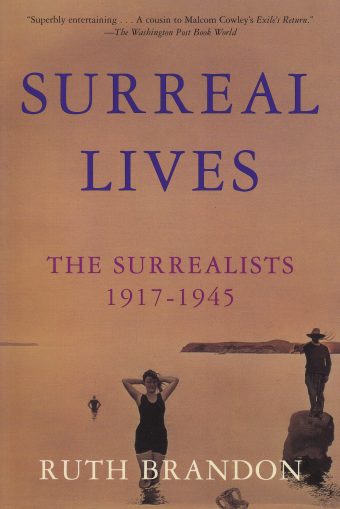how and why did dada and surrealism aise at art movements

The shock and scandal the movement inflamed was deliberate; Dadist magazines were banned and their exhibits closed. Some of the artists even faced imprisonment. These provocations were part of the entertainment but, over time, audiences’ expectations eventually outpaced the movement’s capacity to deliver. As the artists’ well-known “sarcastic laugh” started to come from the audience, the provocations of Dadaists began to lose their impact. Dada was an active movement during years of political turmoil from 1916 when European countries were actively engaged in World War I, the conclusion of which, in 1918, set the stage for a new political order. [23]
By the dawn of the Second World War, many of the European Dadaists had emigrated to the United States. Some (Otto Freundlich, Walter Serner) died in death camps under Adolf Hitler, who actively persecuted the kind of “degenerate art” that he considered Dada to represent. The movement became less active as post-war optimism led to the development of new movements in art and literature.
SURREALISM, noun, masc. Pure psychic automatism by which it is intended to express either verbally or in writing the true function of thought. Thought dictated in the absence of all control exerted by reason, and outside all aesthetic or moral preoccupations.
One of the most important and subversive movements of the twentieth century, Surrealism flourished particularly in the 1920s and 1930s and provided a radical alternative to the rational and formal qualities of Cubism. Unlike Dada, from which in many ways it sprang, it emphasized the positive, rather than the pessimistic rejection of earlier traditions.

Sophie Taeuber-Arp: Composition of Circles and Overlapping Angles, oil on canvas, 495×641 mm, 1930 (New York, Museum of Modern Art); © 2007 Artists Rights Society (ARS), New York/VG Bild-Kunst, Bonn, photo © Museum of Modern Art/Licensed by SCALA / Art Resource, NY
International in scope and diverse in artistic output, both Dada and Surrealism were artistic, literary and intellectual movements of the early 20th century that were instrumental in defining Modernism. The Dada movement, launched in 1916 in Zurich by poets and artists such as Tristan Tzara and Hans Arp, was a direct reaction to the slaughter, propaganda and inanity of World War I. Independent groups linked by common ideas sprung up soon afterwards in New York, Berlin, Paris and elsewhere. These various groups did not share a universal style, but rather were connected by their rejection of idealism, stale artistic and intellectual conventions and modern society’s unchecked embrace of ‘rationalism’ and ‘progress’. They condemned the nationalist and capitalist values that led to the cataclysm of the war and employed unorthodox techniques, performances and provocations to jolt the rest of society into self-awareness. The absurdity of Dada activities created a mirror of the absurdity in the world around them. Dada was anti-aesthetic, anti-rational and anti-idealistic. Key figures such as Marcel Duchamp disturbed the art world with his ready-mades such as Fountain (which is simply a urinal). Dada’s challenge to conventional notions of ‘high art’ radically impacted later developments in conceptual art, performance art and post-modernism among others.

Dadaism
Dadaism and Surrealism were two avant-garde movements of the early 20th century that have had a profound worldwide cultural influence and were both political, societal, and personally introspective expressions of thought both visually and intellectually. They inspired other art movements, literature, and philosophy and were one of the foundations of Modernism.

Three years later, Rimbaud abandoned poetry and France for gun-running in Africa. His words, however, remained; and in 1912, when this now-famous letter was published, it was easy to fall under their spell. Art might change life. Why not? A century and a half of French history underpinned this belief. As Sartre was to point out (somewhat smugly, but nonetheless truly), the French intellectual occupies a position quite different from his lonely counterpart in Britain or America, condemned to isolated struggle and individualism. He is part of a recognized group, a power in the land. It was, after all, intellectuals who set the revolution upon its way; and a little later, in 1830, a group of poets, the young Romantics, precipitated yet another revolution, unseating yet another monarch. As a result (noted Sartre), `the class in power … still does us the honour of fearing us a little (a very little); it treats us tactfully’.
The Andr” Breton who became Apollinaire’s close companion in Paris in the spring of 1916 was a very different person from the young man who first wrote to him a year earlier. The intervening months had been momentous, setting Breton on a path which was to colour the rest of his life – the path which led to Surrealism.
References:
http://courses.lumenlearning.com/atd-sac-artappreciation/chapter/video-marcel-duchamp-fountain-1917/
http://www.oxfordartonline.com/page/dada-and-surrealism
http://www.theartist.me/art-movement/dadaism-and-surrealism/
http://groveatlantic.com/book/surreal-lives/
http://courses.lumenlearning.com/atd-sac-artappreciation/chapter/video-marcel-duchamp-fountain-1917/
